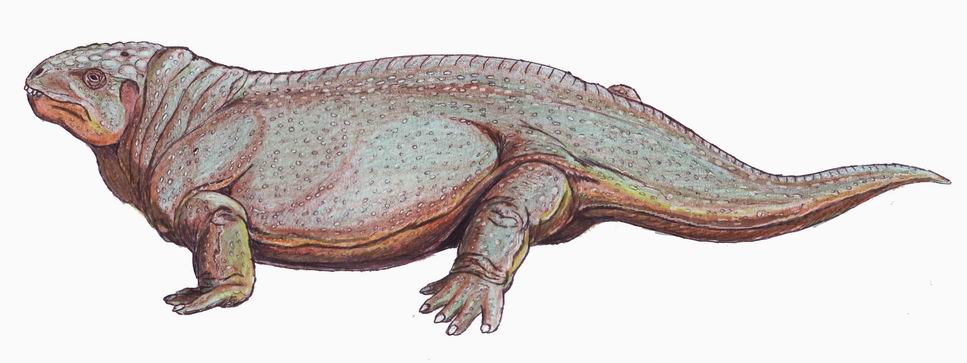|
Kuwavaatakdectes
''Kuwavaatakdectes'' is a genus of Diadectidae, diadectid from the early Permian of Colorado. Taxonomy ''Kuwavaatakdectes'' was originally named as a species of ''Diadectes'', ''D. sanmiguelensis'', by Lewis and Vaughn in 1965, based on a single specimen from San Miguel County, Colorado. However, a 2010 dissertation found it to be generically distinct from the ''Diadectes'' type species, informally renaming it ''Oradectes'', although this genus is not valid under ICZN rules due to it having been coined in a dissertation. The generic name Oradectes means 'margin biter', a reference to the splenial being the only bone flooring the Meckelian fenestra, an autapomorphy of the genus. A paper published in 2024 formally erected ''Kuwavaatakdectes'' for the sole species ''Kuwavaatakdectes sanmiguelensis''. The word 'Kuwavaatak' similarly means margin, in the Ute language spoken by the Núuchi-u people native to Colorado. Thus, the generic name remains in the spirit of Kissel's (2010) sugges ... [...More Info...] [...Related Items...] OR: [Wikipedia] [Google] [Baidu] |
Diadectidae
Diadectidae is an extinct family of early tetrapods that lived in what is now North America and Europe during the Late Carboniferous and Early Permian, and in Asia during the Late Permian. They were the first herbivorous tetrapods, and also the first fully terrestrial animals to attain large sizes. Footprints indicate that diadectids walked with an erect posture. They were the first to exploit plant material in terrestrial food chains, making their appearance an important stage in both vertebrate evolution and the development of terrestrial ecosystems. The best known and largest representative of the family is '' Diadectes'', a heavily built animal that attained a maximum length of several metres. Several other genera and various fragmentary fossil remains are also known. Although well known genera like ''Diadectes'' first appear in the Late Pennsylvanian, fragmentary remains of possible diadectids are known from much earlier deposits, including a piece of lower jaw found in Mis ... [...More Info...] [...Related Items...] OR: [Wikipedia] [Google] [Baidu] |
Diadectes
''Diadectes'' (meaning ''crosswise-biter'') is an extinct genus of large reptiliomorphs or synapsids that lived during the early Permian period ( Artinskian- Kungurian stages of the Cisuralian epoch, between 290 and 272 million years ago). ''Diadectes'' was one of the first herbivorous tetrapods, and also one of the first fully terrestrial vertebrates to attain large size. Description ''Diadectes'' was a heavily built animal, up to long, with a thick-boned skull, heavy vertebrae and ribs, massive limb girdles, and short, robust limbs. The nature of the limbs and vertebrae clearly indicates a terrestrial animal. The rib cage was assumed to be barrel-shaped, but new fossils show the ribs were actually sticking out to the sides. High-resolution X-ray microcomputed tomography has revealed an endosseous labyrinth in the opisthotic, prootic, and supraoccipital of ''D. absitus'', along with a well-preserved vestibule, three semicircular canals, and a developed cochlear recess. The ... [...More Info...] [...Related Items...] OR: [Wikipedia] [Google] [Baidu] |
Fossil Taxa Described In 2024
A fossil (from Classical Latin , ) is any preserved remains, impression, or trace of any once-living thing from a past geological age. Examples include bones, shells, exoskeletons, stone imprints of animals or microbes, objects preserved in amber, hair, petrified wood and DNA remnants. The totality of fossils is known as the ''fossil record''. Though the fossil record is incomplete, numerous studies have demonstrated that there is enough information available to give a good understanding of the pattern of diversification of life on Earth. In addition, the record can predict and fill gaps such as the discovery of ''Tiktaalik'' in the arctic of Canada. Paleontology includes the study of fossils: their age, method of formation, and evolutionary significance. Specimens are sometimes considered to be fossils if they are over 10,000 years old. The oldest fossils are around 3.48 billion years to 4.1 billion years old. Early edition, published online before print. The ob ... [...More Info...] [...Related Items...] OR: [Wikipedia] [Google] [Baidu] |


